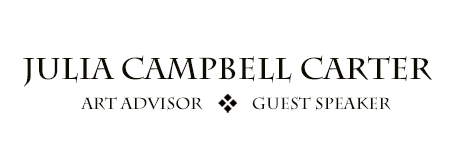International Artists In Times Of Coronavirus
As an independent art consultant, I have been exposed to many different artworks throughout my career. What’s more, I was fortunate enough to discover the great stories behind these artworks, personally recalled by the artists themselves. I often asked myself: what, if anything, do all artworks have in common? Do they share any similarities or motivations?
To answer my question, we may refer to the likes of Carl Jung.
Carl Jung (1875 – 1961) was a Swiss psychiatrist and psychoanalyst, who once studied the human psyche – an area that is both mystical and stimulating for psychologists and soul-searchers alike. Jung proposed the idea that a segment of the deepest unconscious mind is genetically inherited, and not at all shaped by personal experience. Rather, a collective experience is passed down by man and lives on in each and every one of us – a notion that he coined “the unconscious mind”. It means that we, as humans, share an innate library of knowledge and instinct – feelings like joy, love, fear and sadness. This mutual collection of knowledge and instinct is what unites us as a species.
“A child that is born tomorrow contains the whole history of the human race within his body and within his mind.” (Jung)
Vis-à-vis art, Jung proposed that a work of art is a culmination of human experience, and an artwork is sometimes unknowingly guided by the deep feelings and thoughts that exist within us. When we create art, we are communicating in ways that we are not completely aware of.
Let us explore the case of the late A.R. Penck (1939 – 2017), one of few pseudonyms for Ralf Winkler. He was a German neo-expressionist painter, celebrated for his striking visual style. He had no academic background, and instead was an autodidact artist (self-taught). Penck grew up in the secluded, isolated context of East Germany; and, naturally, the harsh realities of the Cold War are reflected in his art. His first-hand experiences and feelings, as well as artistic talent, enabled him to tell an important story.
Penck is often associated with Keith Haring (1958 – 1990), with whom Penck was neither familiar nor acquainted. As German artists who were creating during the same era, their paths did not actually cross, considering that Penck was trapped in East Germany from 1961, without any possibility of accessing the western art world. They were unable to copy each other’s work, yet their works still show similarities.
This could indicate that there are artistic impulses, permeating throughout history.
Jung’s explanation for this, is that symbols and known images are deeply rooted in the history of mankind. This rings true for the stick figures depicted in the artworks of both Penck and Haring. We automatically associate these stick figures with the shape of people because they are reminiscent of our own bodily form. Similarly, Grayson Perry evaluated art created by prisoners and was astounded by the number of eagles, tigers and freedom symbols that arose. As for art created during Coronavirus, meaningful symbols can be expected. Symbols are significant because they evoke a feeling without using any words.
During the first days of lockdown, I spoke to many collectors, artists, friends and family members; everyone shared their deepest feelings with me. Some felt disconnected, sad, dissatisfied and lonely, whilst others surrendered themselves to something higher – something that was fortunately or unfortunately (depending how you perceive things) out of their control. They were finally able to escape the demands and hectic tempo of everyday life, and instead started to truly see and feel again. The beauty of nature, the pleasure of peace and quiet and the results of inner contentment. Nonetheless, we shared a common underlying feeling – fear of the unknown. We saw the impact of Coronavirus on our individual and collective health, social lives and economy. As an art advisor, I was particularly interested in how my network of artists felt during such testing, turbulent times.
Here, you will see a submission from each artist that represents their feelings of being in lockdown.
Please enjoy the following submissions from Adrian Houston (London), Phillipe Gronon (Paris), Jason Gringler (Berlin), Iola Alvarez (Palma de Mallorca) and Wendimagegn Belete (Ethiopia).
As a fellow human living through this time also, I am sure you will be able to relate to some of these artworks.
After all, we are all connected through our emotions. We all speak a universal language: art.
Contact us if you would like to view any of these artworks.
